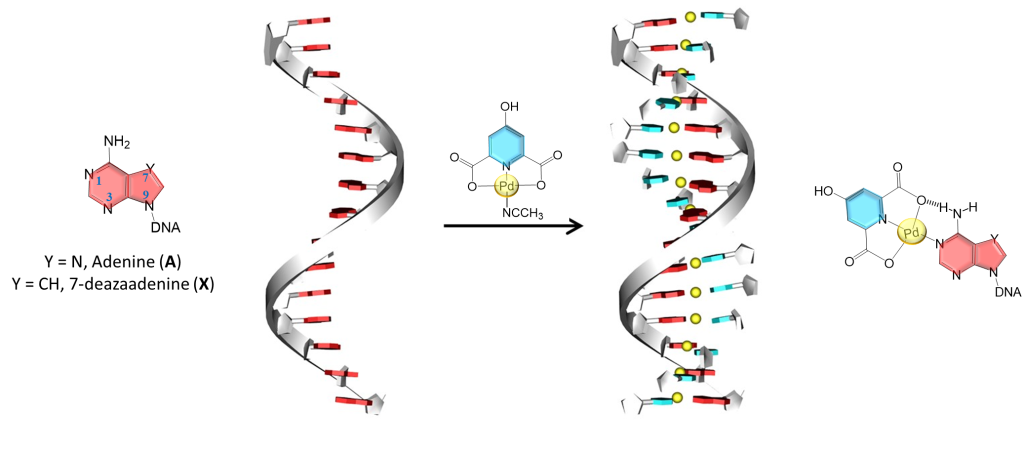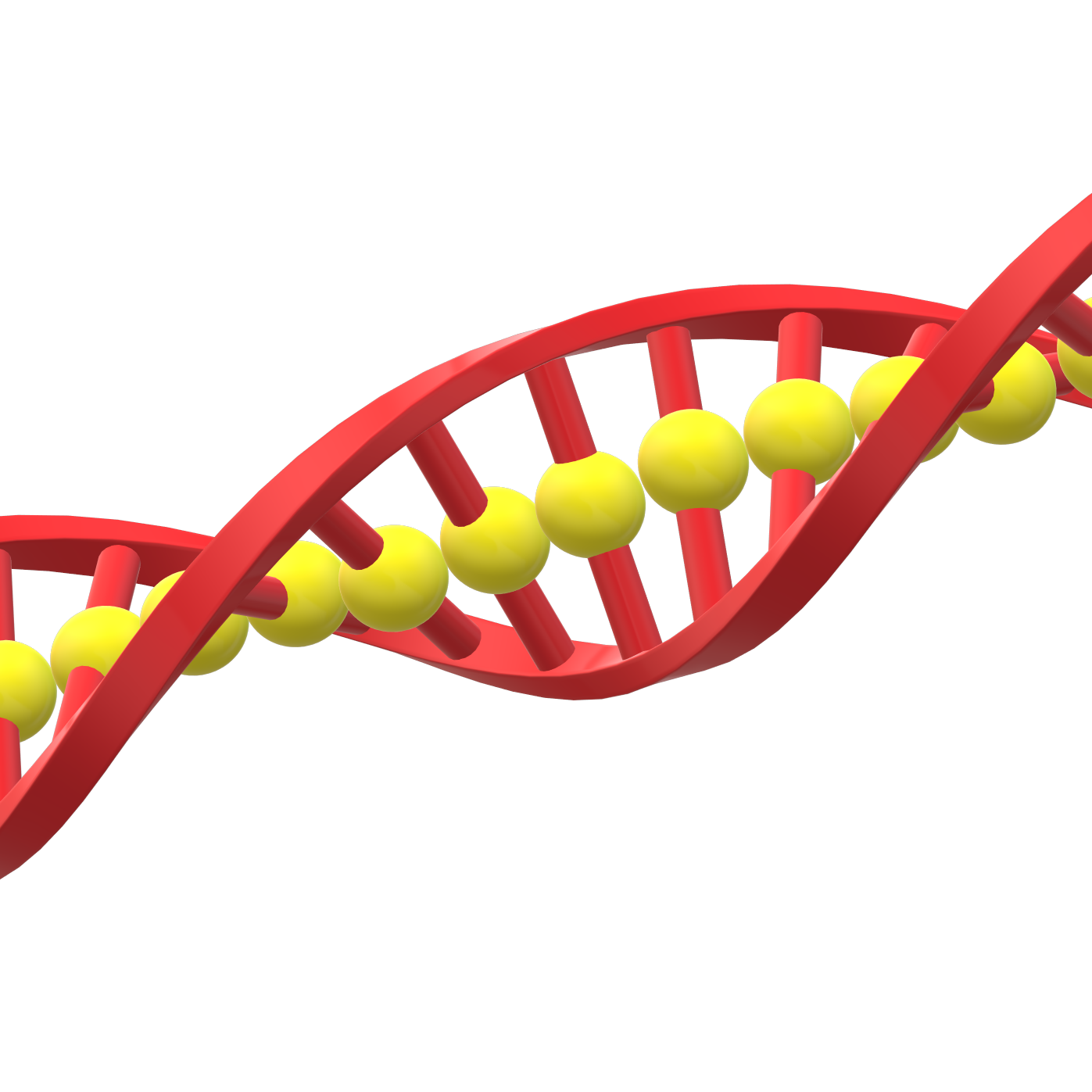Metallized single-stranded DNA
Recently, we have developed a new DNA-templating approach to preparing well-organized supramolecular systems using ssDNA molecules. It is based on the design of metal complexes capable of binding to Watson-Crick-Franklin faces of nucleobases and forming metal-mediated base pairs. This bottom-up approach uses non-modified and readily-available nucleic acids and offers self-correction during self-assembly processes as well as erasing intermediates formed under kinetic control and leading to the formation of the thermodynamic product.
It is important to note that the metal complex can be modified to carry additional functionalities, opening the gate to develop a variety of functional DNA-based systems. We are interested in introducing chromophores and precursor monomers of conductive polymers, as an attractive material for optical and electronic nanomaterials.


